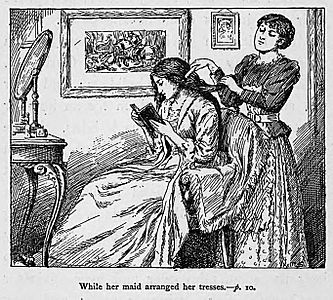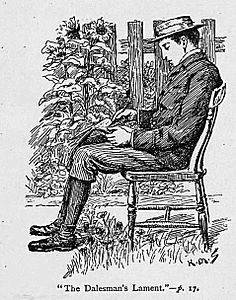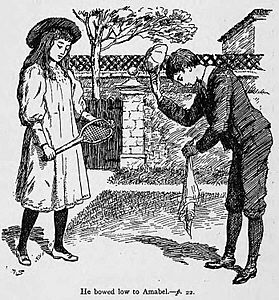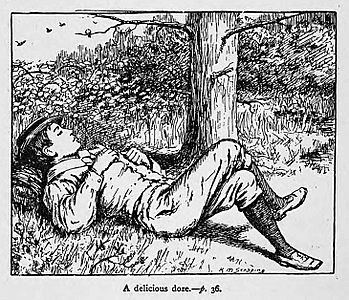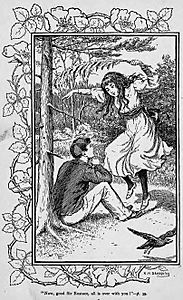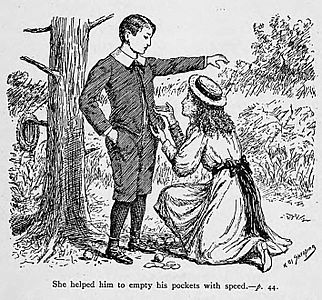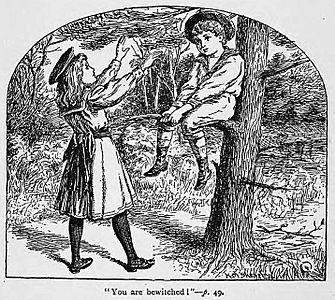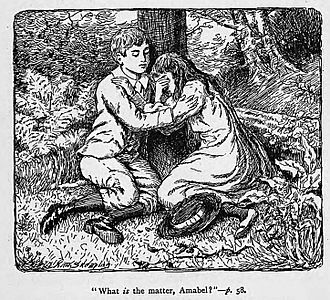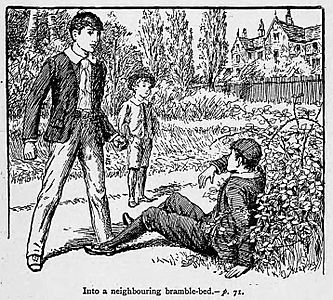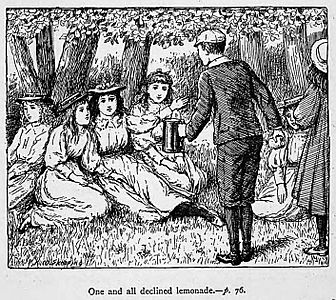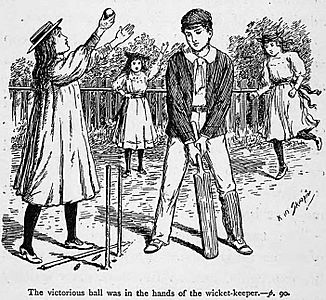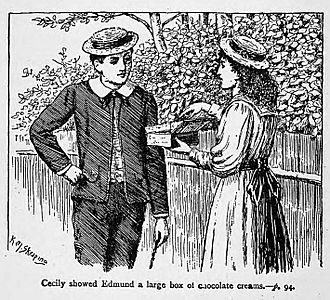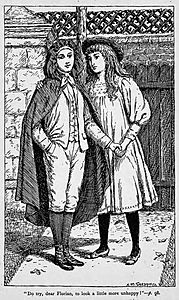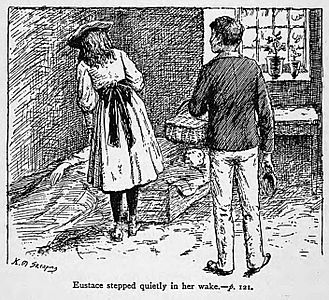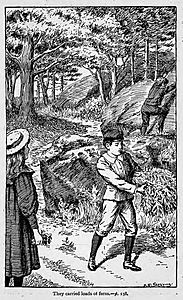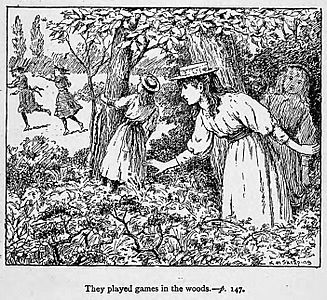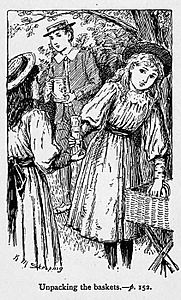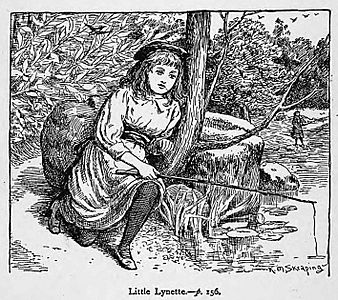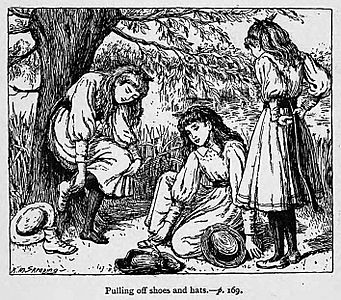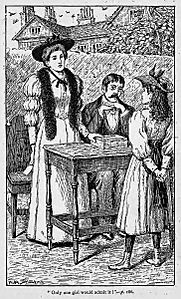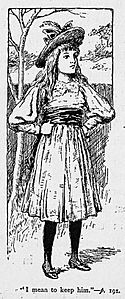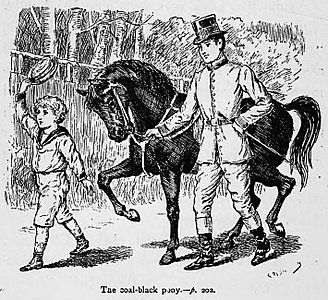Ellinor Davenport Adams facts for kids
Quick facts for kids
Ellinor Davenport Adams
|
|
|---|---|
| Born | 1858 |
| Died | 11 April 1913 (aged 54–55) Putney, London, England
|
| Nationality | British |
| Other names | Ellinor Lily Davenport Adams |
| Occupation | Author and Journalist |
| Years active | 1878–1903 |
| Known for | Girls' fiction |
Ellinor Davenport Adams (born in 1858 and died on April 11, 1913) was a British writer and journalist. She was best known for her stories for girls. Ellinor was special because she often told her stories from a child's point of view.
Contents
About Ellinor Davenport Adams
Ellinor Davenport Adams was born in late 1858. She was the third child in her family to survive into adulthood. Her father, William Henry Davenport Adams, was also a journalist and author. Her mother was Sarah Esther Morgan.
Ellinor's family was very creative and involved in writing and theater. Her father wrote over 100 books! Her older brother, William Davenport Adams, was a well-known journalist and author too. Her older sister, Florence Mary Susan Ballingall, also wrote stories and plays for children, often about fairies. Even her younger brother, Alfred Elliot Adams, became an actor.
It's not clear how Ellinor was educated. She didn't have a governess at home. Her father was a teacher and tutor, so he might have taught his daughters himself. Ellinor grew up reading many classic books from her father's large library. She was reading these grown-up books when most kids her age were still reading simple storybooks.
Ellinor lived with her sister Florence for her whole life. Even after Florence got married, they continued to live together with their parents. They moved a few times, living in places like Solihull and Wimbledon.
By 1891, both Ellinor and Florence were working as writers. Later, in 1901, Ellinor described herself as an "Author." By 1911, both sisters were working in "Journalism and Literature."
Ellinor stopped publishing new books around 1902. This might be because she took over her brother's job reviewing books for "The Globe" newspaper after he died in 1904. She also continued to work for a publisher called Blackie and Son until she passed away.
Ellinor's health slowly got worse. She died at home on April 11, 1913. She had suffered from asthma for many years. She was buried in Putney Vale Cemetery.
Ellinor's Stories and Books
Ellinor's first story in a book was Wild Raspberries: a tale of love and adventure, published in 1878. She was 27 at the time. Her first long story for girls, Colonel Russell's Baby, came out in 1889. She had actually written this story when she was much younger, as a girl herself.
She worked closely with her brother, William Davenport Adams, who was a literature reviewer for "The Globe" newspaper. After he died, she took over his job for several years.
Ellinor mostly wrote stories for girls. Many of her later books were published by Blackie and Son. She also worked for them as a "publisher's reader," which means she read new stories and decided if they should be published. Some of her later books were even used as readers in schools.
List of Books
Here are some of the books Ellinor Davenport Adams wrote:
| Ser | Year | Title | Illustrator | Publisher | Notes |
|---|---|---|---|---|---|
| 1 | 1878 | Wild Raspberries: a tale of love and adventure | Edinburgh Publishing Company, Edinburgh | This was one of five stories in a collection. | |
| 2 | 1886 | The illustrated poetical birthday book, with a supplement of female Christian names and appropriate quotations | W. Mack, London | This book had pages for birthdays with poetry extracts and spaces to write names. | |
| 3 | 1889 | Colonel Russell's Baby | W. Smith & Innes, London | This story is about a nine-year-old girl who goes to a day-school. | |
| 4 | 1891 | Comrades True | Edith Scannell | Oliphant, Anderson & Co, London | This book is about the strong friendship between a boy and a girl. |
| 5 | 1891 | Robin's ride | Walter S. Stacey | Cassell and Co., London | This story tells of a little boy's brave ride through the snow to help his friends. |
| 6 | 1894 | The disagreeable duke : a Christmas whimsicality for holiday boys and girls | Emily J. Harding | George Allen, London | Children plan to take a fir tree from a grumpy Duke and leave a note. |
| 7 | 1896 | Little Miss Conceit | Hannah Clarke Preston MacGoun | Oliphant & Co, London | A fifteen-year-old girl is too proud for chores or playing with her younger siblings. |
| 8 | 1896 | The Palace on the Moor | Edward Arnold, London | A young boy from India joins his sisters in England and proves his courage. | |
| 9 | 1896 | The holiday prize, a modern fairy tale | Kenneth Mathiason Skeaping | Jarrold & Sons, London | Children in a village compete for a prize to become the most perfect knight. |
| 10 | 1897 | May, Guy and Jim; with other stories, etc. | John Henry Frederick Bacon | Blackie & Son, London | A collection of short stories. |
| 11 | 1897 | Miss Secretary Ethel, a story for girls of to-day | Harry Furniss | Hurst and Blackett Ltd., London | A girl becomes a secretary to a Baronet due to her family's struggles. |
| 12 | 1899 | A Girl of To-day, etc. | Gertrude Demain Hammond | Blackie & Son, London | Boys and girls form a "Society of Altruists" to help their poorer neighbors. |
| 13 | 1899 | Miss Mary's Little Maid | Blackie & Son, London | This was a simple reader book for children learning to read. | |
| 14 | 1899 | A queen among girls | Harold Copping | Blackie, London | A story with lots of emotions and self-sacrifice. |
| 15 | 1900 | Betty the bold | Edith Alice Cubbitt | Blackie & Son, London | |
| 16 | 1900 | Granny's coach-and-four | Percy Tarrant | Edward Arnold, London | A story about a young boy and girl who work to buy their grandmother a wheeled chair. |
| 17 | 1901 | Little greycoat | Edith Alice Cubbitt, Talwin Morris, Chris Mullen | Blackie & Son, London | This story showed how a sweet child could have a good influence on others. |
| 18 | 1901 | On Honour. A school and home story | T. Nelson & Sons, London | Three girls try to help two sisters who were raised by a mean aunt. | |
| 19 | 1902 | Elsie Wins! | H. M. Brock and Audrey J. Watson. | Blackie & Son, London | |
| 20 | 1902 | Those twins! | Susan Beatrice Pearse | Blackie & Son, London | Twin siblings, a boy and a girl, try to help their troublesome uncle. |
Illustrations for A Holiday Prize
Kenneth Mathiason Skeaping (1856–1946) was an artist who illustrated A Holiday Prize. He created 35 pictures for the book, plus a fancy title page and decorations for each chapter. People said his illustrations made the story even better!
Why Ellinor's Books Were Special
Ellinor Davenport Adams was a typical writer of girls' stories from her time. Her books were a mix of older Victorian tales that taught lessons and newer stories that were more fun.
People who read her books said that Ellinor really understood children. She had a strong connection with them and knew what girls needed in a story. This helped her create exciting plots and characters that felt real.
One thing that made Ellinor's books stand out was how she wrote from a child's point of view. For example, her first novel, Colonel Russell's Baby, is told through the eyes of a nine-year-old girl. This story really explored the girl's character in detail. In Robin's Ride, the story is also told from the young main character's perspective.
Reviewers often mentioned that Ellinor had a deep understanding of how young people think and act. In her book On Honour, she wrote about two sisters who were raised poorly by a mean aunt. Readers found their characters very believable and moving. Little Miss Conceit was also praised as an "excellent study of child character."
Ellinor's stories often featured girls who were trying to figure out their place in the world. Some of her heroines wanted to be "new girls," meaning they aimed for careers and independence. But they also often stayed "nice girls," focusing on kindness and family. For example, in A Queen among Girls, the main character, Augusta, gives up her dream of a career to protect her sick younger brother. This shows how girls in her stories balanced being independent with being caring.


